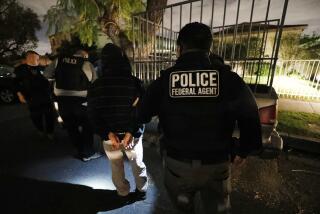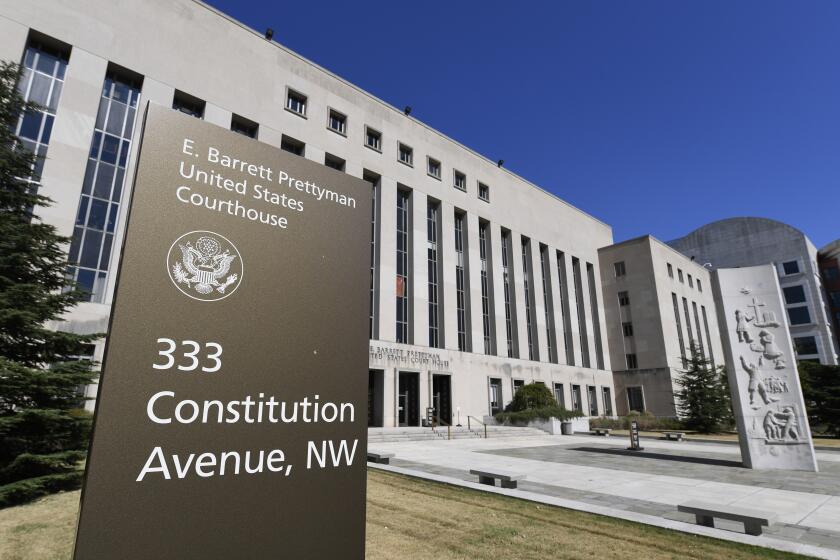U.S. plans to overhaul how immigrants are detained
- Share via
Nonviolent immigrant detainees could be held in converted hotels, nursing homes or placed in electronic ankle bracelets for monitoring as part of a series of reforms planned for the nation’s detention system, Department of Homeland Security officials said Tuesday.
The moves would help overhaul a system that houses an average of 32,000 detainees every day across the country and has been criticized as having unsafe and inhumane conditions. Some of the detainees include women and children.
“This is a system that encompasses many different types of detainees, not all of whom need to be held in prison-like circumstances or jail-like circumstances, which not only may be unnecessary but more expensive,” Homeland Security Secretary Janet Napolitano said.
The department plans to build two detention centers, including one in California. Napolitano said some detainees had violent pasts and needed to be securely detained, but others were asylum-seekers with no records and should be held at facilities “commensurate with the risks that they present.”
In August, John Morton, assistant secretary for Homeland Security, pledged to create a more centralized system that increased government oversight and accountability.
The department began reviewing more than 350 contracts with jails, state prisons and private facilities with plans to centralize the management of the contracts. Officials also are doubling the number of personnel to monitor the facilities that hold more than 80% of detainees and are developing an online system to help families find relatives in the system.
In addition, the controversial T. Don Hutto Family Residential Facility in Texas has been converted to hold only women.
Some of the proposed changes are expected to reduce costs for Immigration and Customs Enforcement, which has a nearly $2.5-billion annual budget for detention and deportation. For example, alternatives to detention cost $14 per day, while detention can cost more than $100, officials said.
Napolitano will submit a plan to Congress this fall on electronic monitoring and other types of supervision. She said the department would ensure that those released on electronic monitoring showed up to court and had their cases decided in a timely way.
Judy Rabinovitz, deputy director of the American Civil Liberties Union’s Immigrants’ Rights Project, said she was pleased that the Obama administration was making improvements. But she said the government should reassess whether everyone arrested for an immigration violation should be detained at all.
“It’s obviously encouraging that the administration seems to be taking seriously the immigration detention system and how it needs an overhaul,” she said. “But it’s not simply about where people are detained. It’s about how they ended up in detention and why they are staying there.”
The ACLU also expressed concern that healthcare in detention centers would remain inadequate and that nonemergency services would still be denied. Critics say the detention system lacks medical care that could have prevented dozens of deaths since 2003.
Napolitano said the department planned to create a system to better identify medical and mental health issues and to help manage care.
Immigrant rights advocates want the federal government to make detention standards legally binding so immigrants can have family visits, recreation time and legal materials.
The reforms primarily come out of a 35-page report by Dora Schriro, who has since left the department.
--
More to Read
Sign up for Essential California
The most important California stories and recommendations in your inbox every morning.
You may occasionally receive promotional content from the Los Angeles Times.










